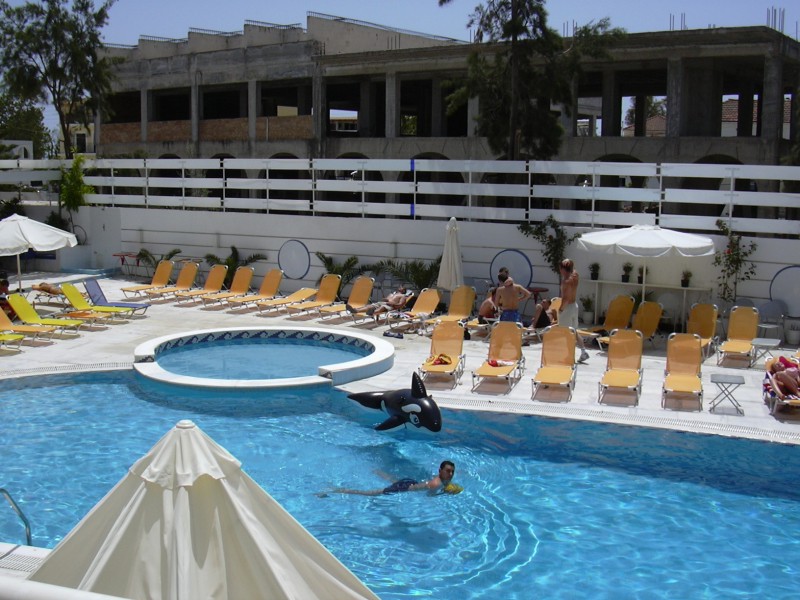
Zante Greece May 2003 - Part I
Last Updated: Jan 13, 2007 @ 09.16
With a wayne on the way, we really needed a holiday. We had been trying to go to Oslo for a couple of months, and we had the trip entirely booked but then Kim lost her job. Kim quickly found another job, but as she was temp'ing, getting even a long weekend was difficult. After visiting several travel agents we found a real good deal, and decided on Zante, which is one of the larger Greek islands directly west of Olympia. Greece was our twentyith country, so we hoped that it would be a little special.
Greece - Zante - Laganas - We left Glasgow at around 1:00am and landed at Zante airport at around 5:30am. We were wearing our typical May Glasgow kit (aka - warm jacket, jeans, sweater etc). The pilot came over the speaker and announced that it was about 85degrees, and it was only 5:30. When we got of the plane, we thought that we probably didn't need the 3 pairs of jeans, 2 jumpers and long sleeve shirts. We definately hadn't brought enough t-shirts and shorts. When we arrived, it was dark, so we didn't really get a good look at the place. When we awoke, we opened the shutters, and beyond the balcony was a lovely pool and sunbeds. As you can see, there is a building site just past the pool. We were really fortunate, as there was only one person actually working on the hotel-to-be, so there was minimal noise. Or... so we'd thought.

Greece - Laganas - Turtle Hunt - The island of Zante is home to 70% of the Mediterrian's breeding turtles. You wouldn't think that there'd be so many turtles using this one little island. Everywhere you look are signs for turtle seeing trips. The first boat trip we took was a trip around the island and then the second trip was just a trip to turtle island.
These next pictures are from our second trip (the first trip will be shown later), including a couple of pictures are of Turtle Island. And, what lives on Turtle Island? Birds, of course! It is not named because of any of it's local inhabitants, but because the island looks like a turtle.
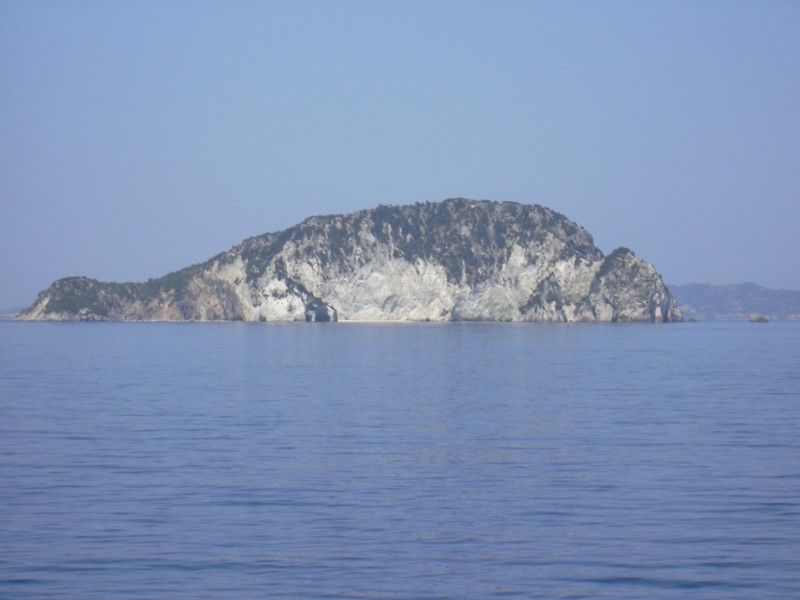
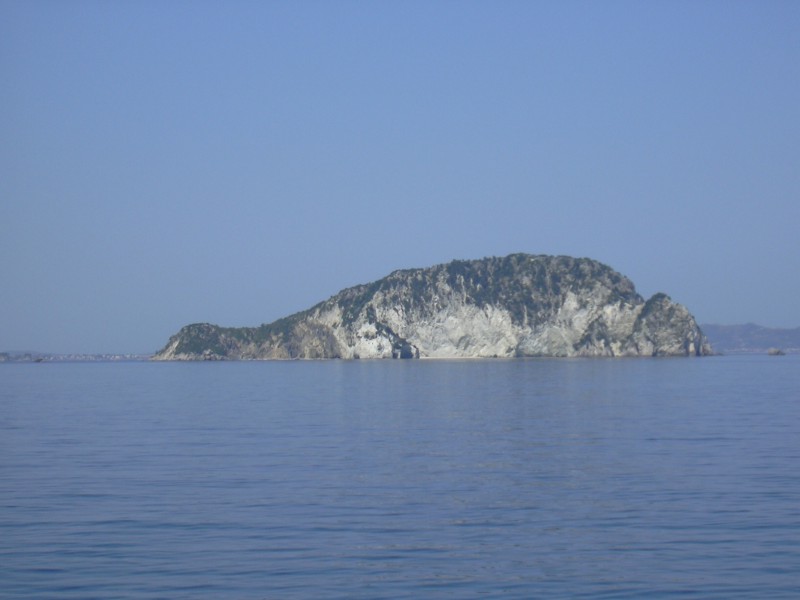
This is the back of the island and some of the hidden caves. Some of the larger caves around Zante were used by the subs for hiding during the war.
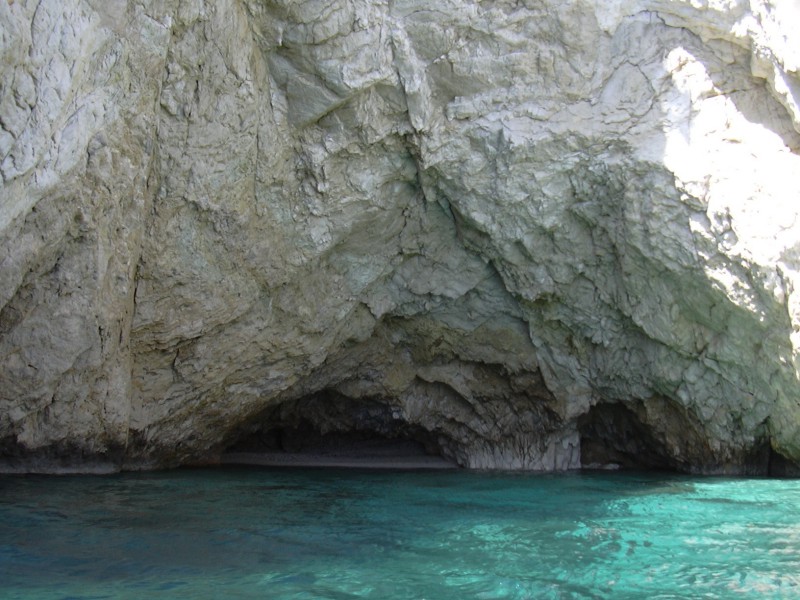
Here we are getting closer into one of the larger caves.

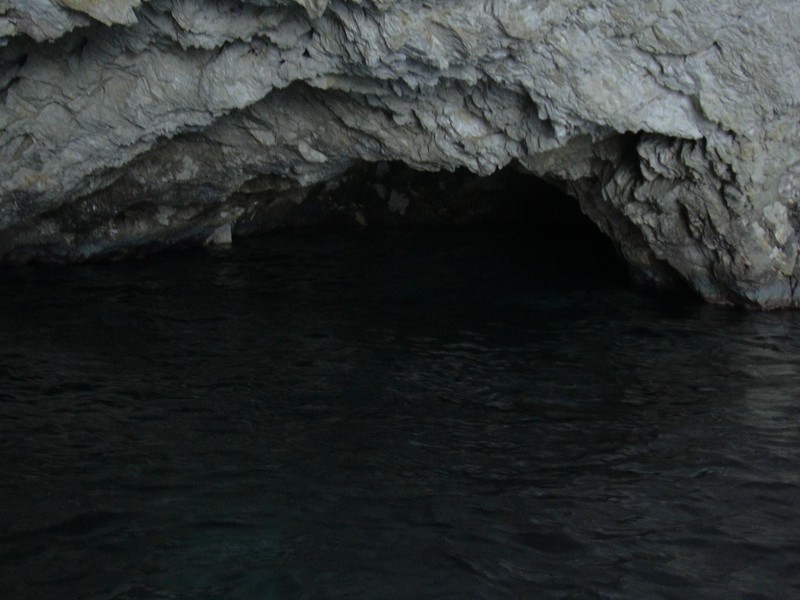
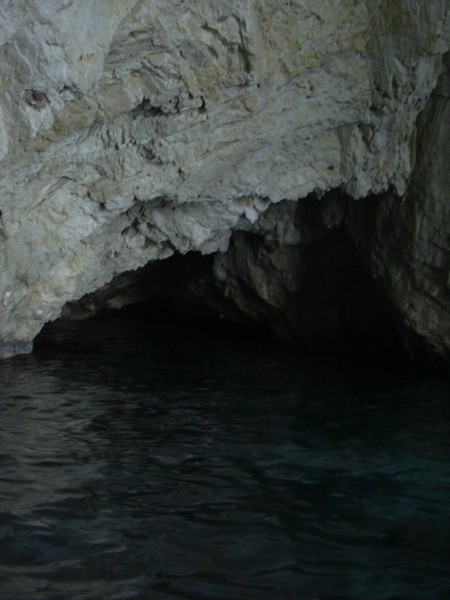
And, the boat driver decided to park the boat in one of the caves. Hey, where'd the boat go???
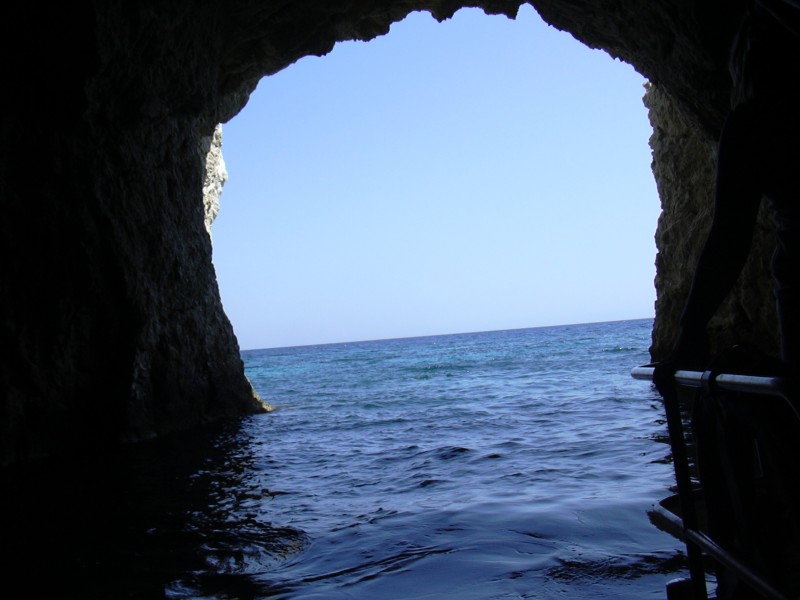

Here's Kim wading in the beautiful sand. Behind her are several of the glass bottom tour boats. This was a really nice excursion from the busy beaches of the main island. There was also a snack boat that had fruit, cookies, pop, and other goodies. That was one job that I would really love.


Here we are back on the open water. Can you spot the turtle?
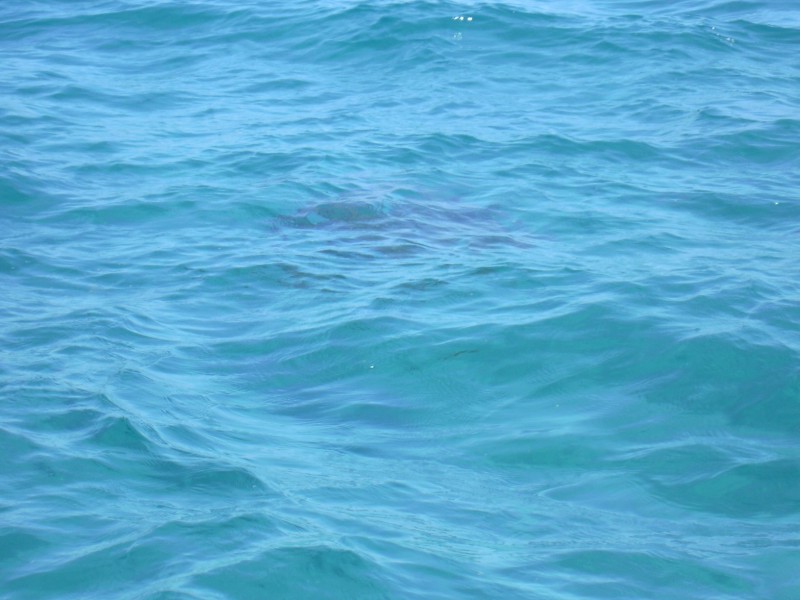
Here's a little better shot of us chasing a poor little turtle.
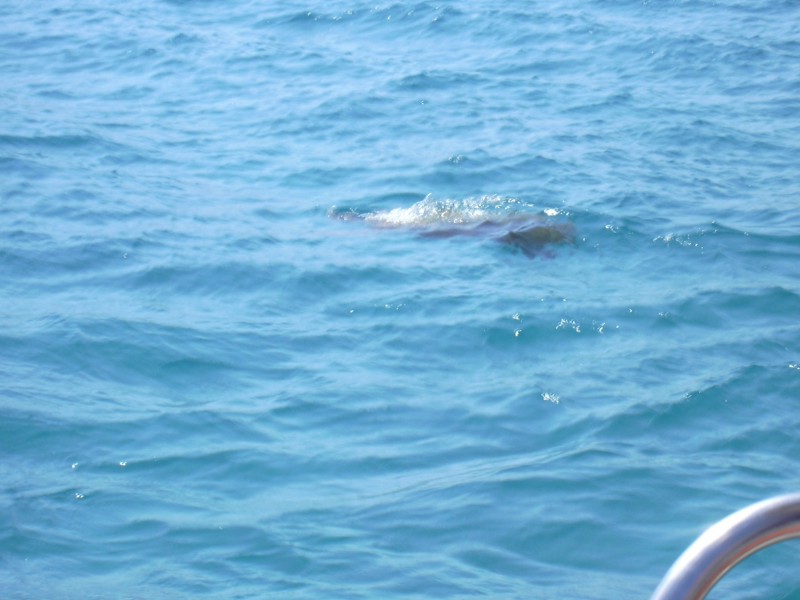
This is either us in a glass bottomed boat, or, the next couple pictures will be of Davy Jones locker. Turtles are actually quite big, and can live to be upto 130 years. There is another picture later of a turtle, but you'll have to wait for the pictures from the other boat trip.

We spent a lot of time eating. Well, when you go on a holiday, you relax and eat. It's what you do. These last three turtle pictures are from on restaurant looking at the beech. Accassionally we would see a turtle come to the surface. You wouldn't think that turtles are very fast, but they are quite quick when they are in their own element. They only surface for about 10 seconds, so getting a good picture is a very hard task.
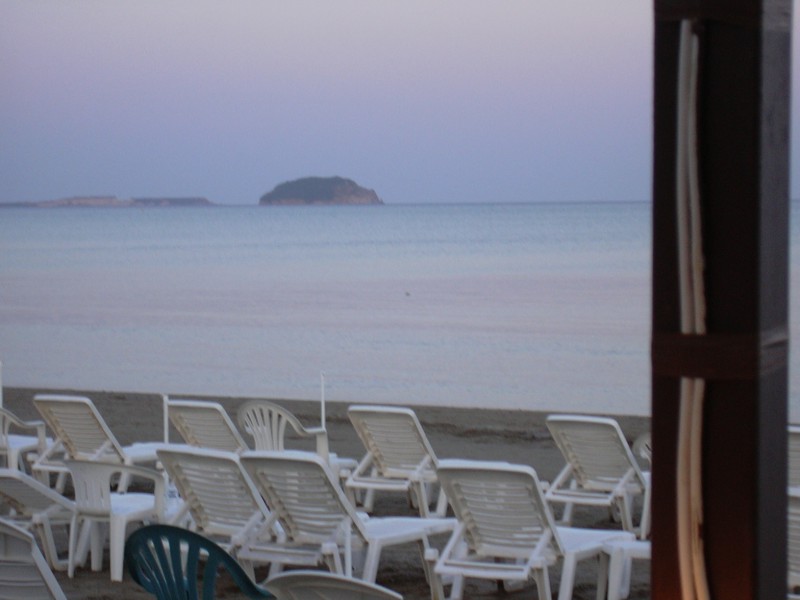
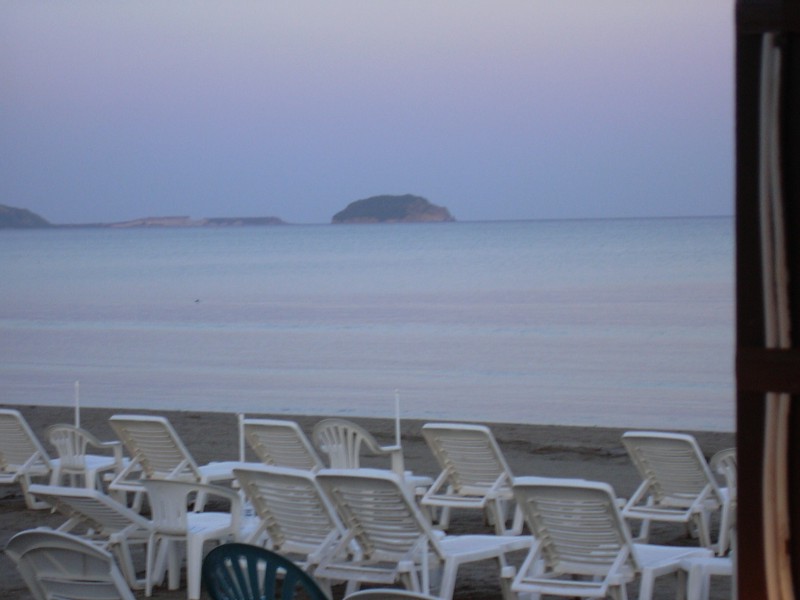

Greece - Laganas - Waterfront - The beach at Laganas went for miles and miles. Here are a couple of pics looking around the beach.
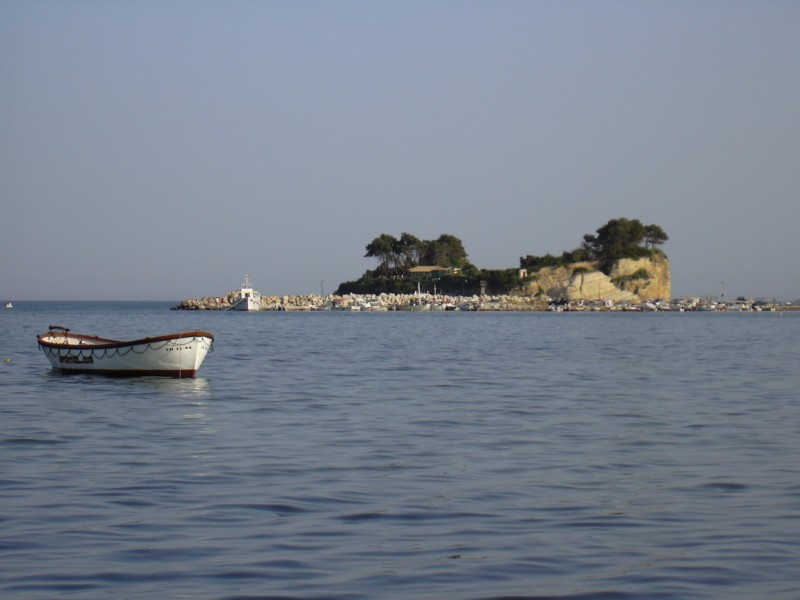
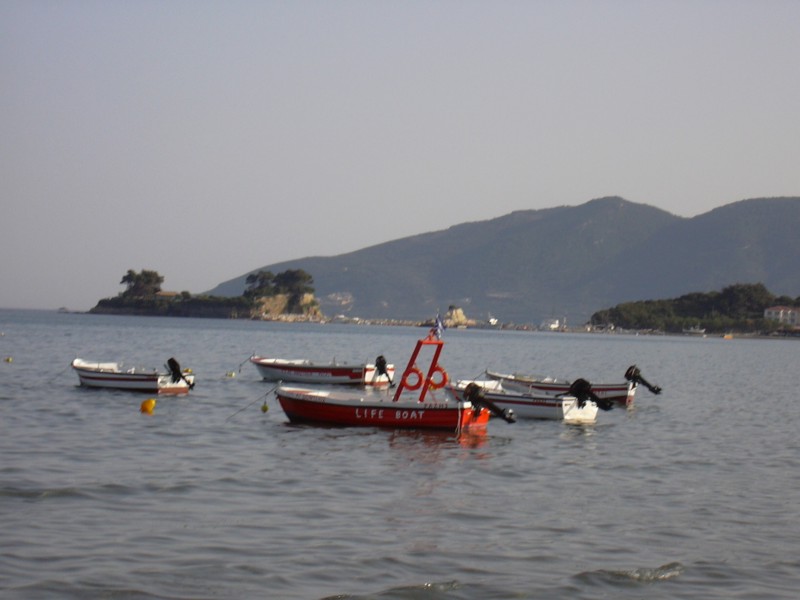
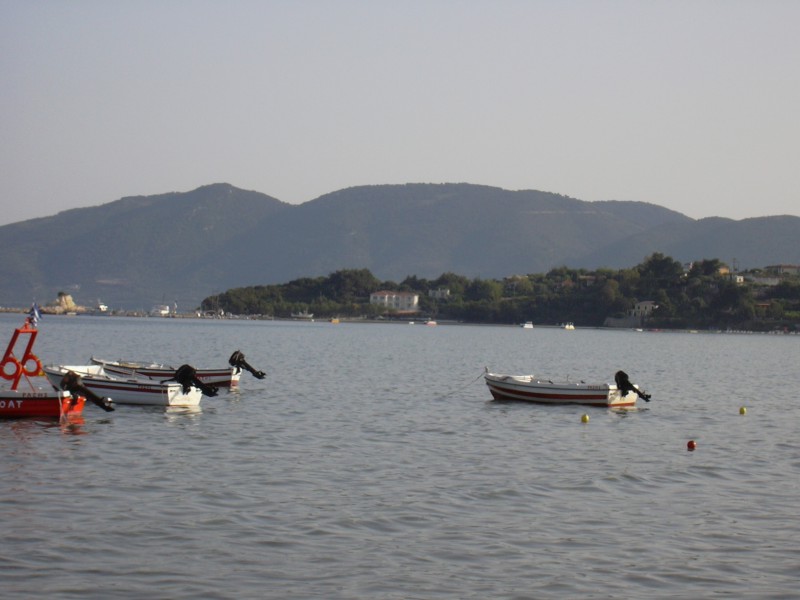
As you can see, the beach at Laganas was very shallow, and some spots went for ever. I am not sure how far I am out, but the water is just past my knees.
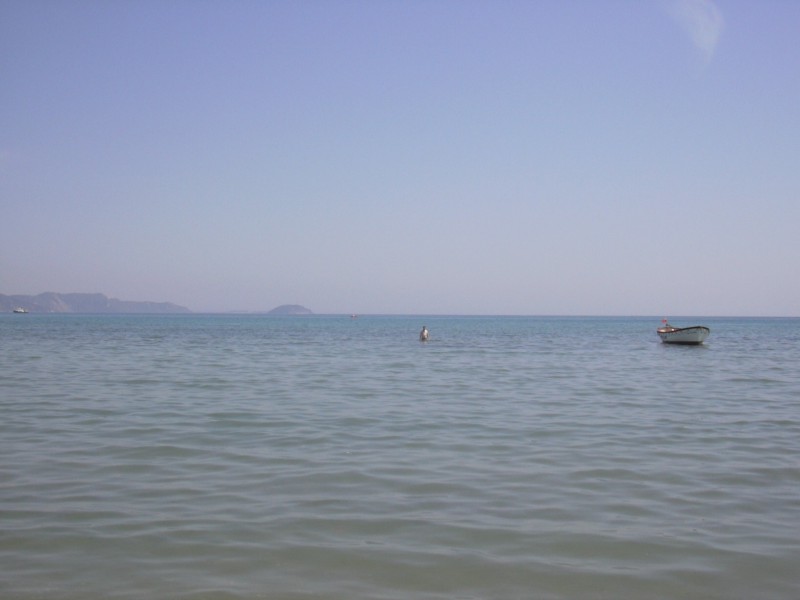
The main street is just off to my left, and this is looking East down the coast.

This little island had two different night clubs on it. One was on the east side of the island looking towards Laganas, and the second was on the west side, looking up the coast. We didn't get the chance to go to the island, so we'll leave that for our next trip.
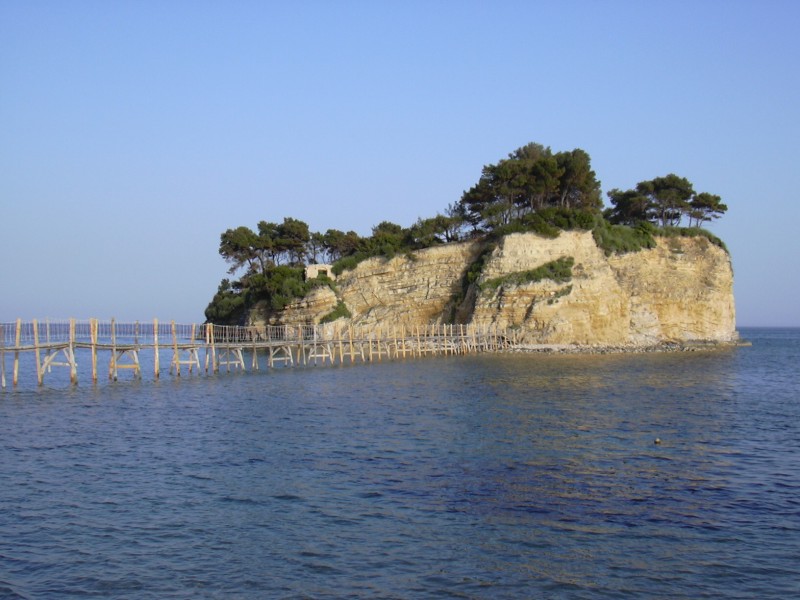
Here was Kim feeling the sand between her toes, the sun at her back, and the gentle caress of the water on her ankles. It was a beautiful day.
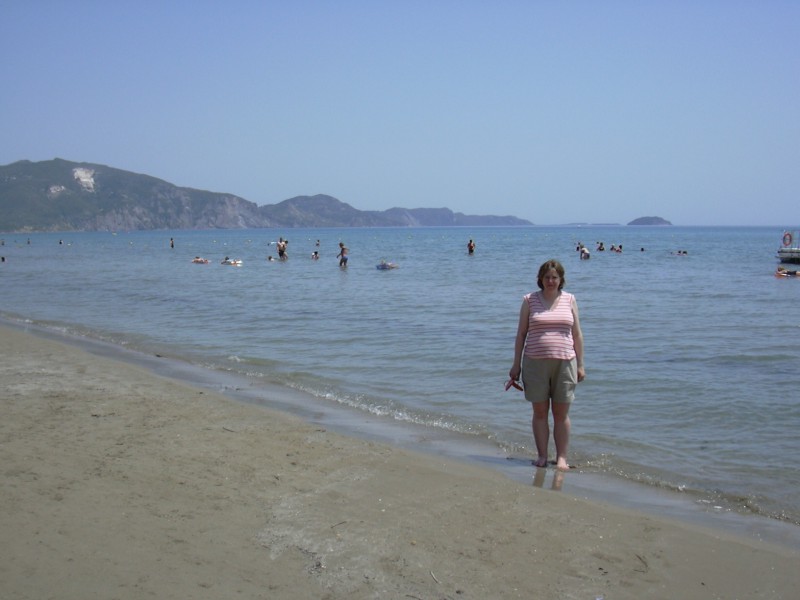
I've included a panoramic shot of the beach by using 4 pictures taped together. Isn't modern technology great? The beach in the front is Laganas beach, just down the beach is Zante Town's beach. Along the coast is a lot of hotels, but the tourist trade is still in it's infancy on this island. During the day, this beach is semi-packed and you can rent a beach chair from E2.50/chair to E8.00/chair, all depending on where and how close to the main strip you were. If you walked down a little ways, the prices would get cheaper and cheaper. During the night, this beach is actually used as a road. This is really unfortunate as it packs the sand down, so where it could be really nice, light fluffy sand is quite packed. To view this pic, just hold down the right arrow.

Greece - Olympus - Our only excursion to the mainland was to Olympus. Olympus is the birthplace of the Olympic Games (but you probably already knew that). The olympic games were going on for over 400 years, and were only skipped twice due to unsafe conditions due to wars or squabbles. It was the Romans that actually tainted and eventually put an end to the games. It is a shame that there are so many ruins on this site, as they don't have enough time or money to excivate everything. In a couple of years, Athens will be hosting the olympic games, so a lot of funding has been going into Athens, building airports and improving the city. This means that other areas such as Olympia and Zante will be a little neglected.

This is where the runners could train during the winter or during rain. There was a long track enclosed below these tall pillars.
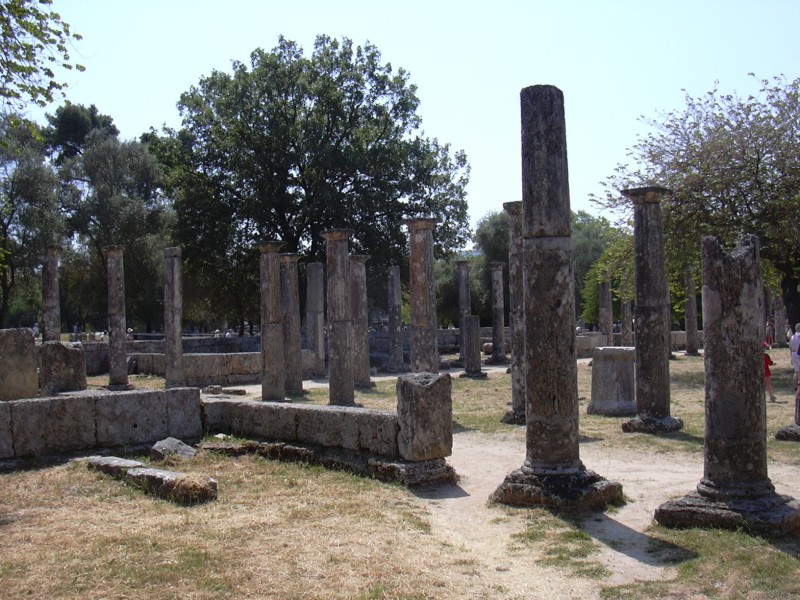
These track ran off to the right and way off to the left.
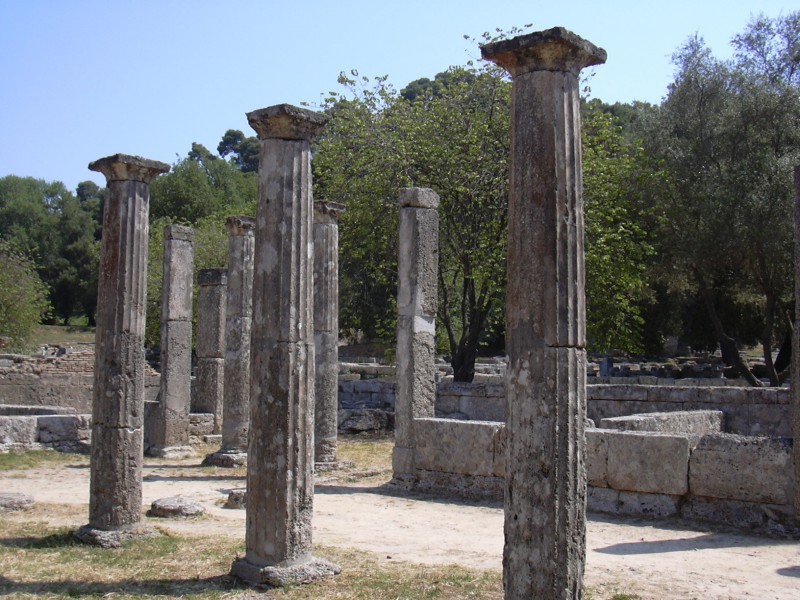
And, here is more of the track.
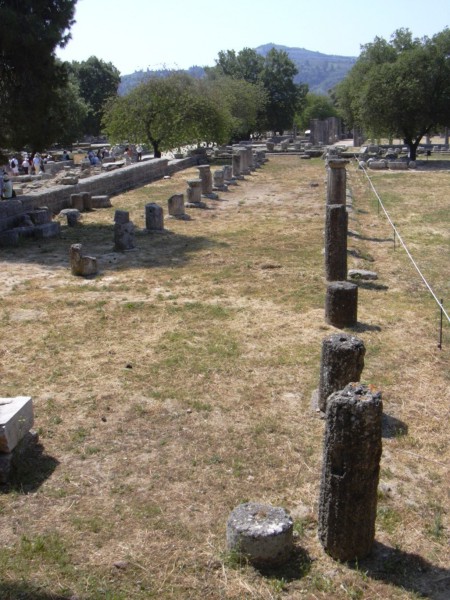
Here is the back of the track, with the road infront of it.
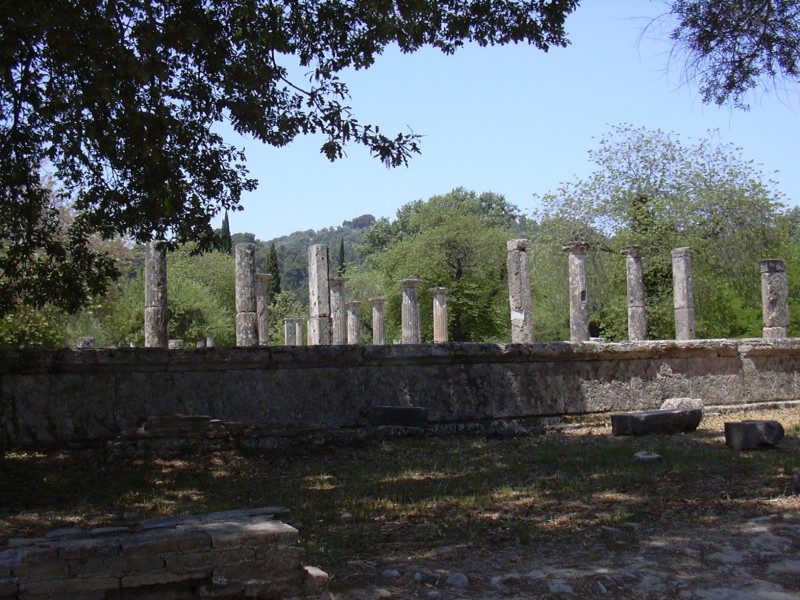
Here are quite a few more ruins around the site.
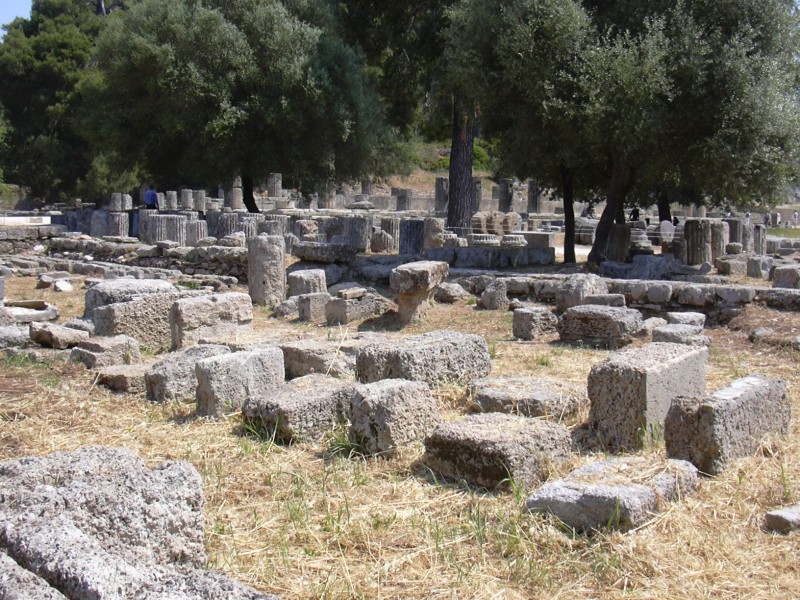
On the right (above the man's hat) is the end of the covered track. To the left just up the stairs is the monument to Zeus. More on that later. Just beyond the trees and at the bottom of the mountain is a river which provided the water for the games.

Just so you don't think this is Disney Olympia, here is proof - this is actual Ancient Greek tablet. I have no idea what it says, so that prooves that it is authentic! Our guide could actually read most of the tablet. I'm not sure if that is because the language hasn't changed that much, or because he learned to read it as part of his job.
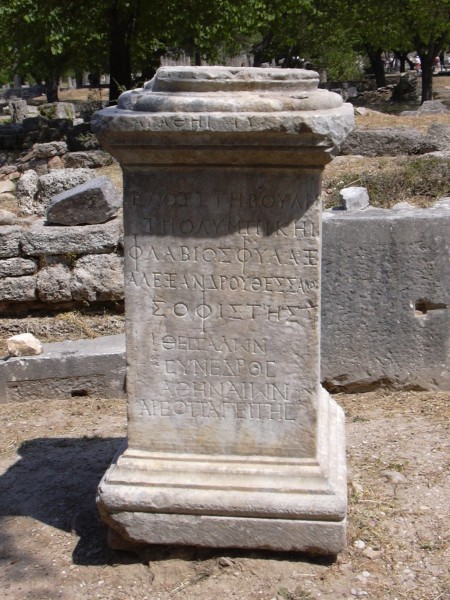
Here is a roadway between several of the campus buildings.
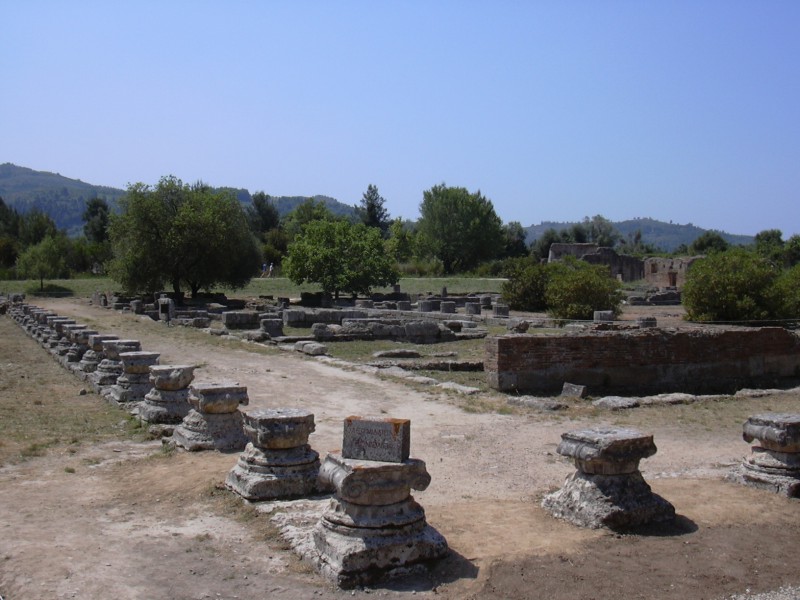
The trees on the other side of the road are olive trees. The reward for winning an event was not gold, silver or bronze, but, it was an olive wreath. That's all. Nothing more. Just the honour of winning. If an athlete was able to win the same event for a second time in 4 years, they would get a life size statue. For the winner, they had the opportunity to become local heros, and would be able to tell their story to the rest of the village.
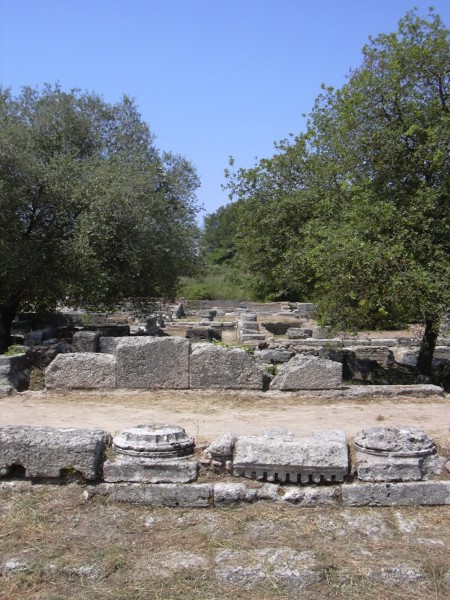
Now, some of the blocks look quite small, but the picture of this block doesn't do it justice. This one is at least 6 feet wide, and at least a foot thick. Fortunately, since they had all these olympic athletes kicking around, it just took three of them to lift and set this block.
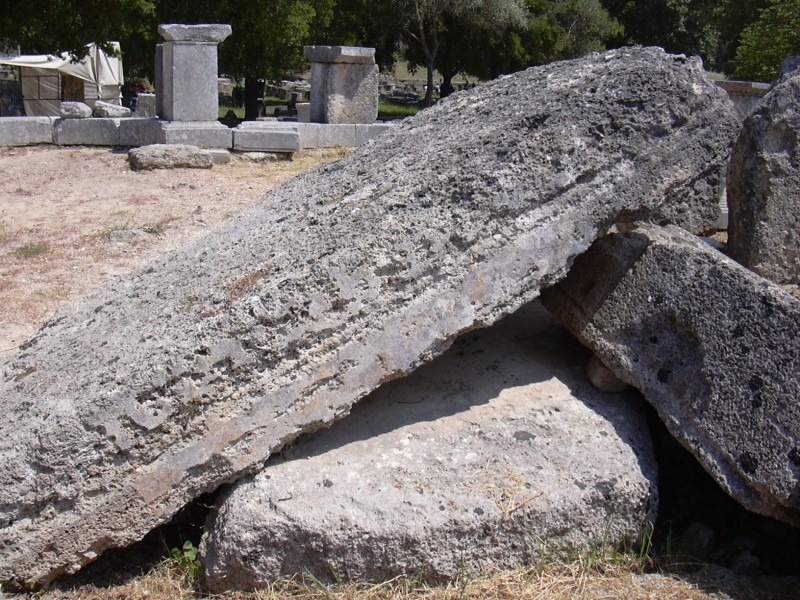
This is a very interesting building. It was originally used by the Greeks, however, when the Romans acquired the site, they required a church. This building has been convereted into a RC church, where some of the artifacts are Greek and some are Roman.

A different shot of the front.

Here we can see the original pillar has been recarved by the Romans.

This shows the different bases and tops of the pillars, showing the different styles.
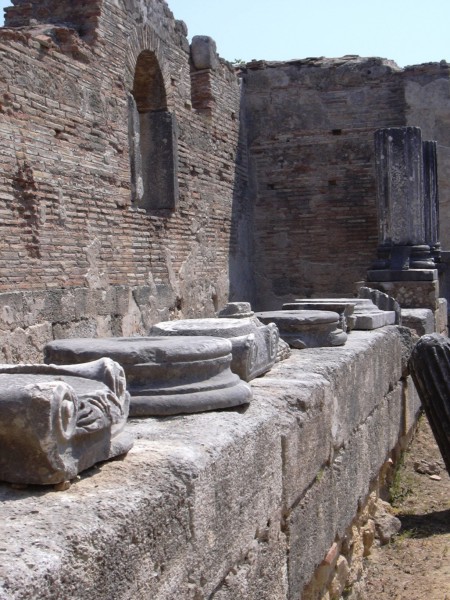
And, we have the Cross engraved overtop the other designs. The interesting thing about this carving is that on the back of the rock has not been finished, and you would never know what has been carved.
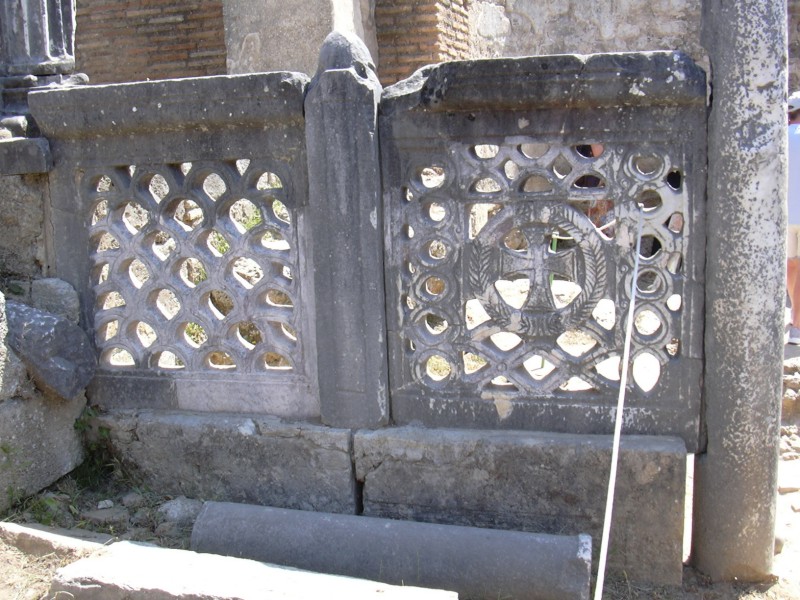
If this was one of those tacky websites, there would be trumpets playing and other fanfair. This obviously isn't one of them. (actually I couldn't find the *.wav file to make the sounds so you will just have to use your imagination). This is the entrance to the stadium, almost like it looked several thousand years ago. All of the spectators and participants would come through this entranceway. Everyone was equal.
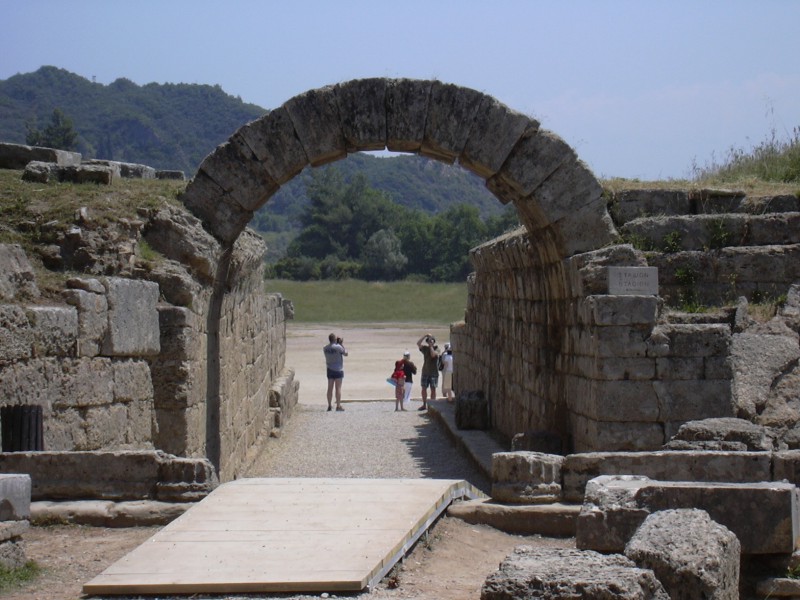
This is looking from the inside of the stadium looking down the entrance. Along the right just past the entrance were (before the Romans came and trashed the place) were 12 statues of famous athletes. Now, these weren't statues of the bold and wonderful warrors, but these were actually the statues cheaters. If you were caught cheating, they would make a statue of you, so you and your sponsor would be shamed by all the participants and spectitators for years to come. Unfortunately, all that is left of these statues is the pillars and their names, as the Romans destroyed pretty much everything they could.

Here is the monument to Heraion (Hpaion for the Greek amonst us, who we all know as Zeus' wife. From this picture, Zeus' monument would be to the left, about 50 feet.

The next two pictures are of Herodes Alter, which unfortunately is a little worse for wear over the last 1600 years. They would light a torch using a bowl, kind of similar to using a magnifying glass to light a branch, but instead, the light is focused back towards the sky. This is the only ritual that the women were allowed to participate in, as they were not allowed to watch or participate in the games.
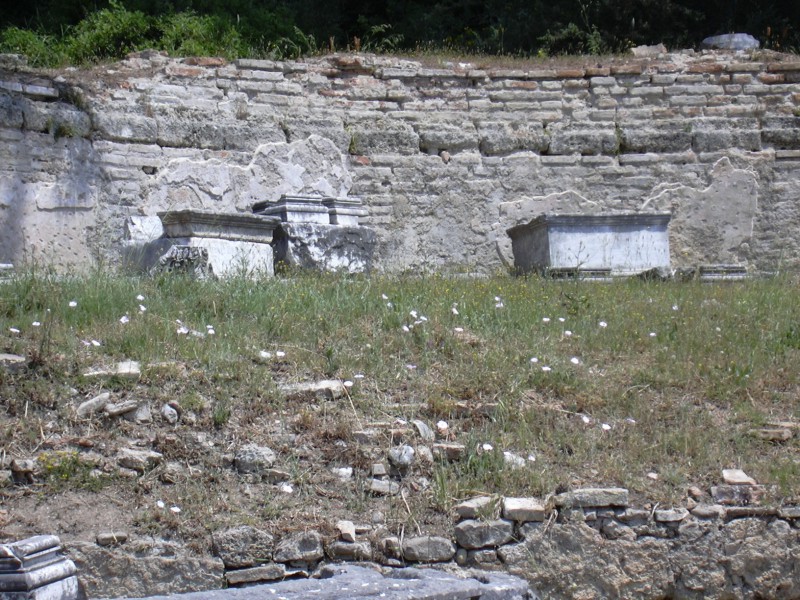

Now most of the original Olypian's have been long gone, but this is one of the few remaining locals. Can you spot him?
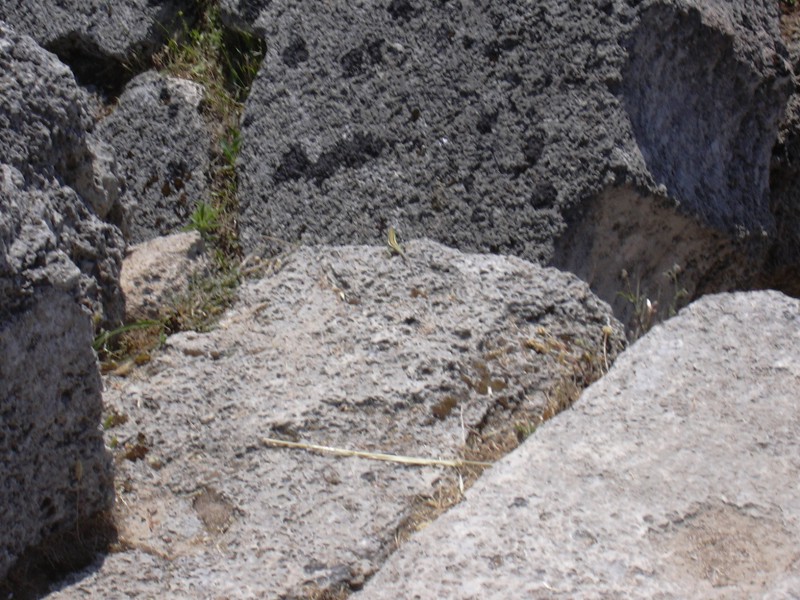
Here is a closer view.
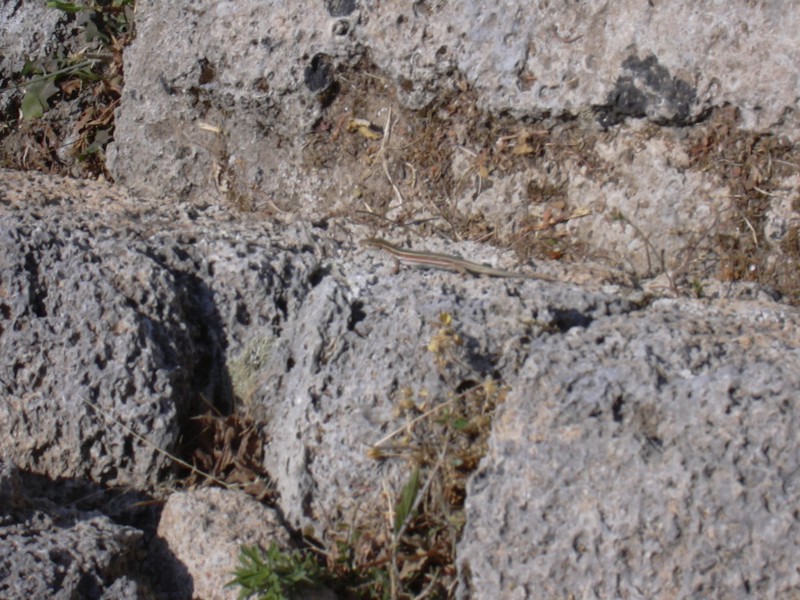
These rocks have shells encrusted in them. Which means that the quary was fairly close to the sea, or that Olympus was once closer to the sea than it is now.
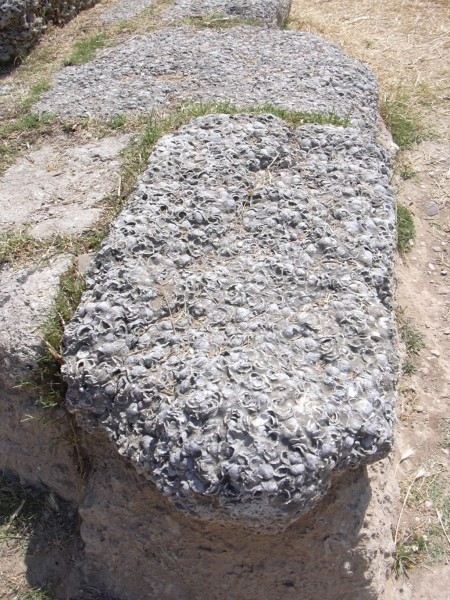
Here is a map of what Olympus used to look like.

And the names of the buildings above.
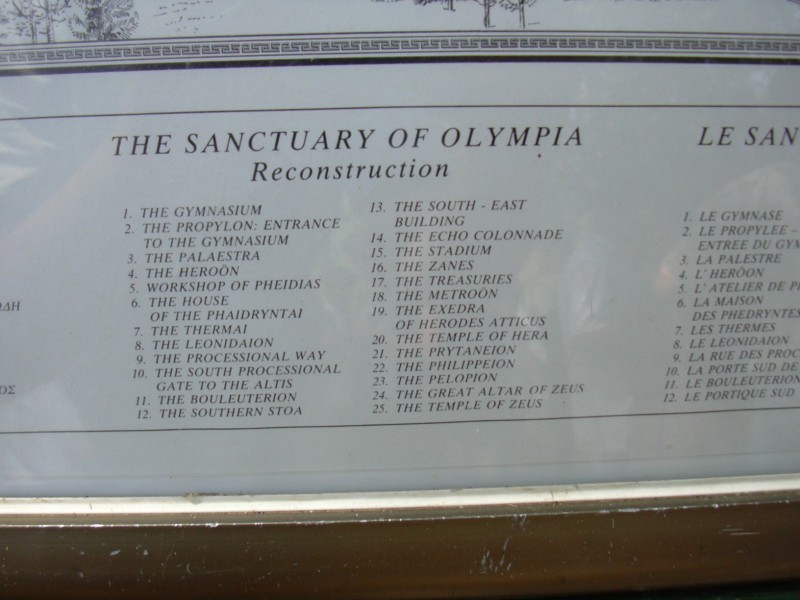
And the history of Olympus starts out:

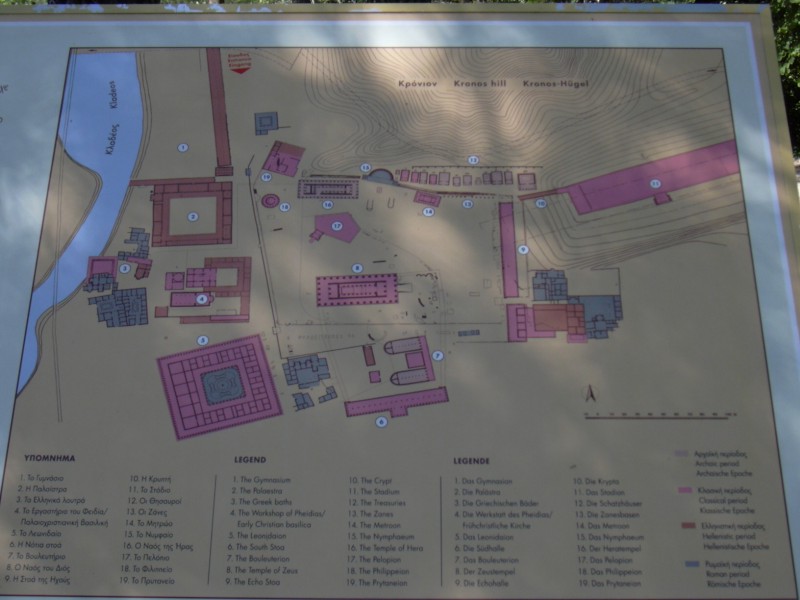
This is Mount Kronos, who was one of the supporting gods for the games. I'm not sure if Kronos was as important as Zeus, but up there on an importance scale.
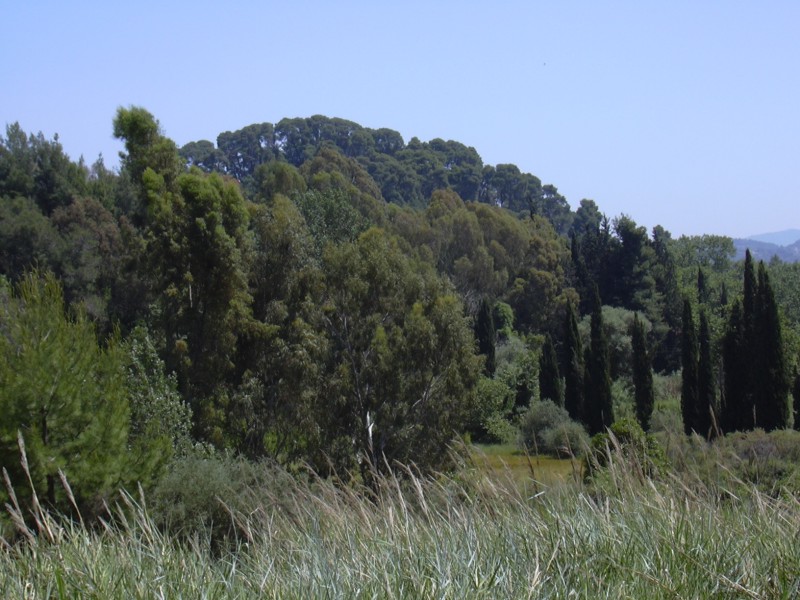
Here's the foundation of the Philippeion.
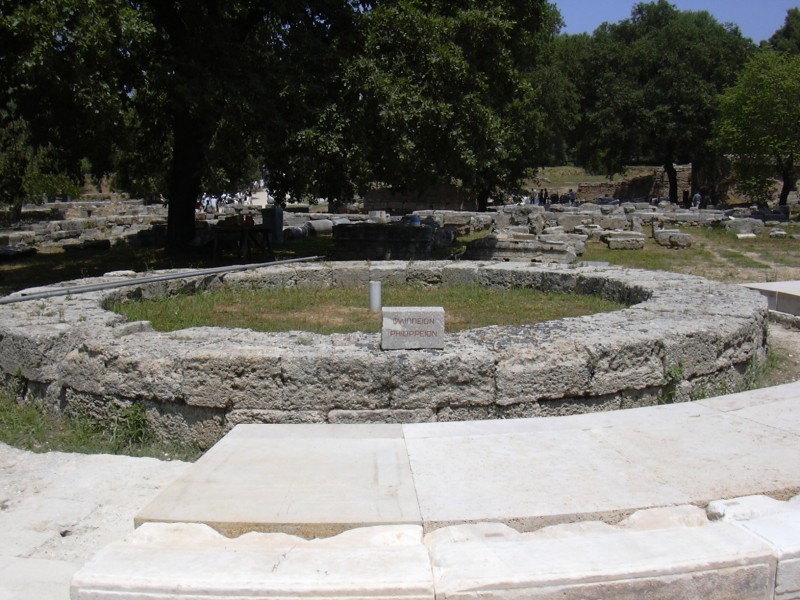
These seven rocks seem quite insigificant, however, these were some of the most important rocks on the entire Olympus site. Yes, these humble rocks are the podium that the winners would receive their wreathes.

After beating the entire competition, guess who won first?
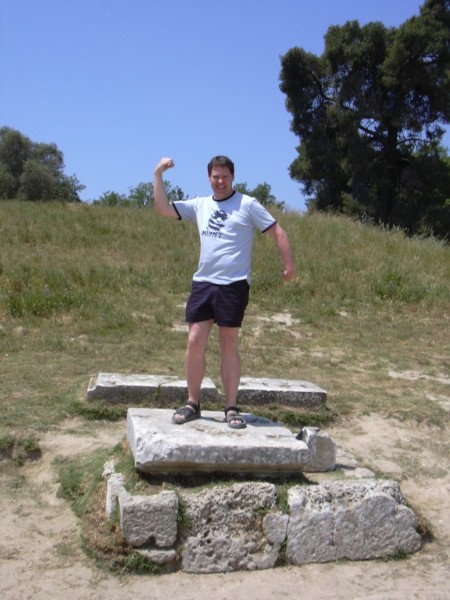
Here is the track for the games. Everyone sat on the ground around the track. On the right side is where the judges sat, as they had their own area. The track doesn't appear that long, but you try running down it with +35C heat. I tried...

As I mentioned before, only men were allowed to participate in the games. The story goes that a mother went to the games dressed as a man, and when her son won his wrestling tournament, she jumped up, and said that she was a women and was proud of her son. Obviously nobody was impressed. As a result, for the next games, everybody was required to go nude.

And, what's a trip to Olympus without seeing the monument to Zeus. Unfortunately they had an earthquake which pretty much destroyed what the Romans hadn't.
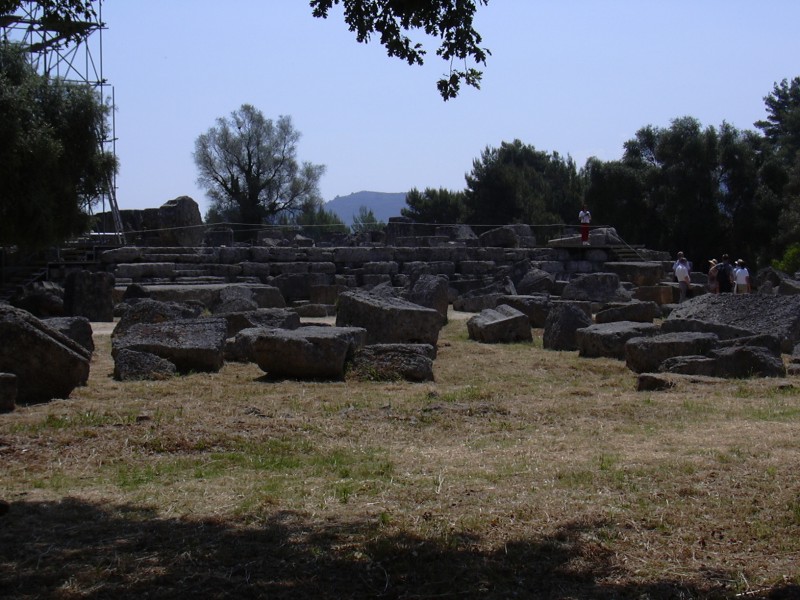
These pictures don't really show the size of the monument.
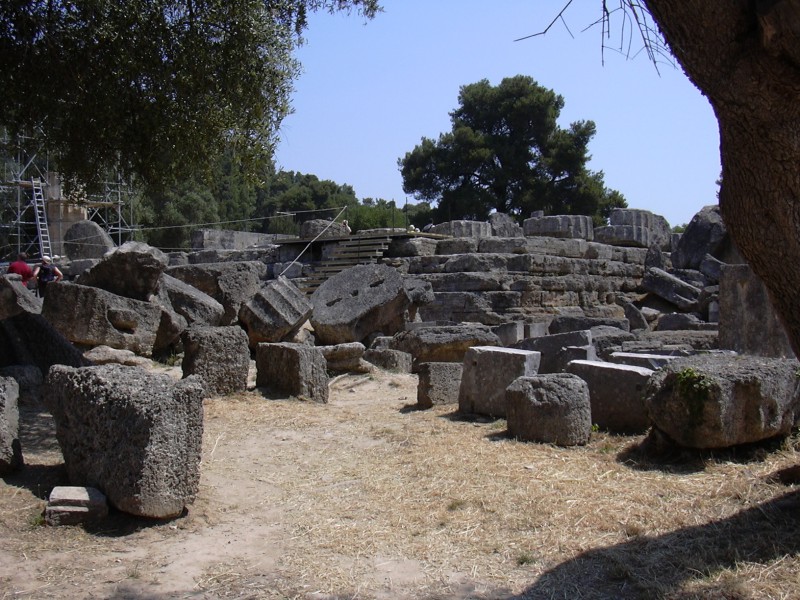
You start to see just how big the pillars were with the round (almost cog like) pillars.

The ancient steps to the temple of Zeus.
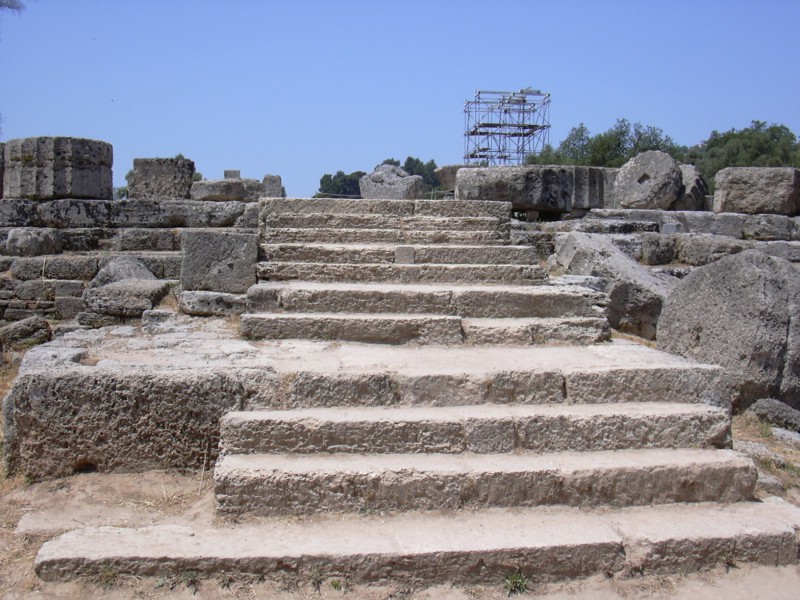
They have scaffolding up - I'm not sure if they are trying to rebuild the site or not. It would be impressive if they could rebuild the temple.

The final shot of Zeus's temple shows just how big the pillars were, and when they collapsed, that it was just a big domino effect.
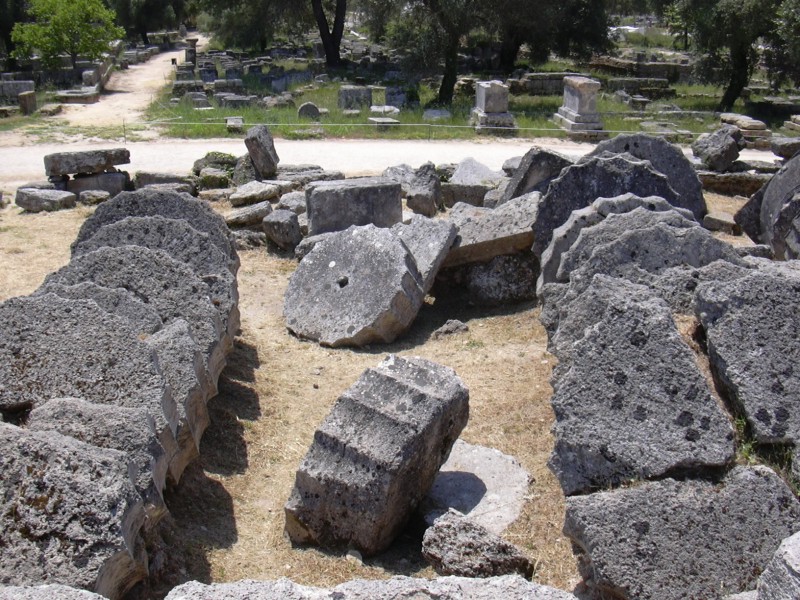
After we had a tour of the olympic playground, we had a little stop at the restaurant. Outside the restaurant (restaurant to the left) was this tree. I am not sure what kind of tree it is (really doesn't matter, does it?) but it has a beautiful setting.

This is looking towards the olympic village, with the restaurant behind me.
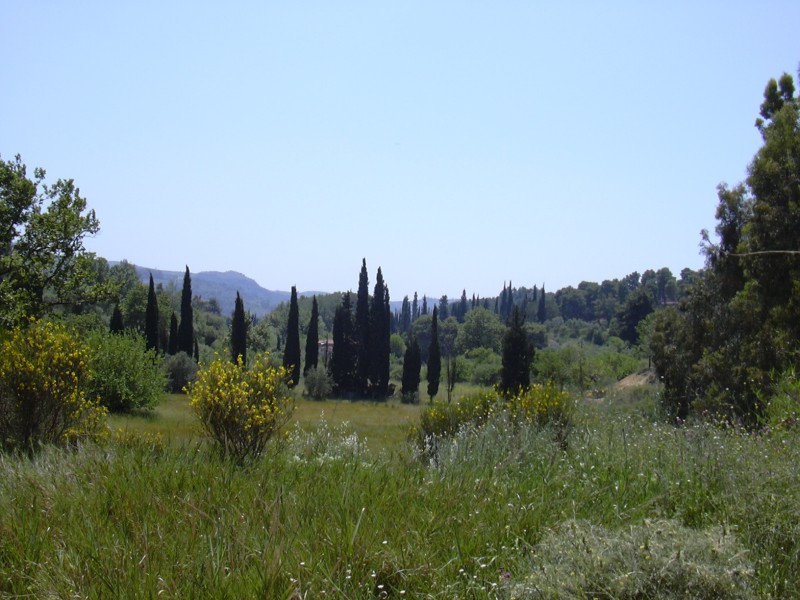
And looking up the hill, or from the right of the last picture.

This is from the inside of the restaurant. If you weren't feeling particularily peckish that day, the little birds would come along and help you clean your plate. They had the vine growing all around and inside the restaurant. Nice place to be a plant.
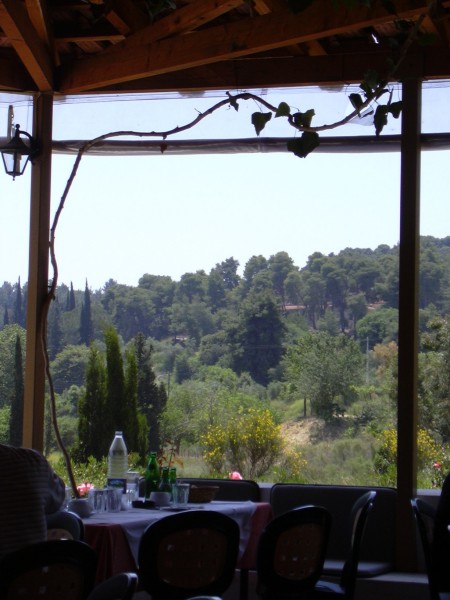
We were running a little ahead of schedule for our ferry back to Zante, so we had a little break alongside the road, and found this little castle.
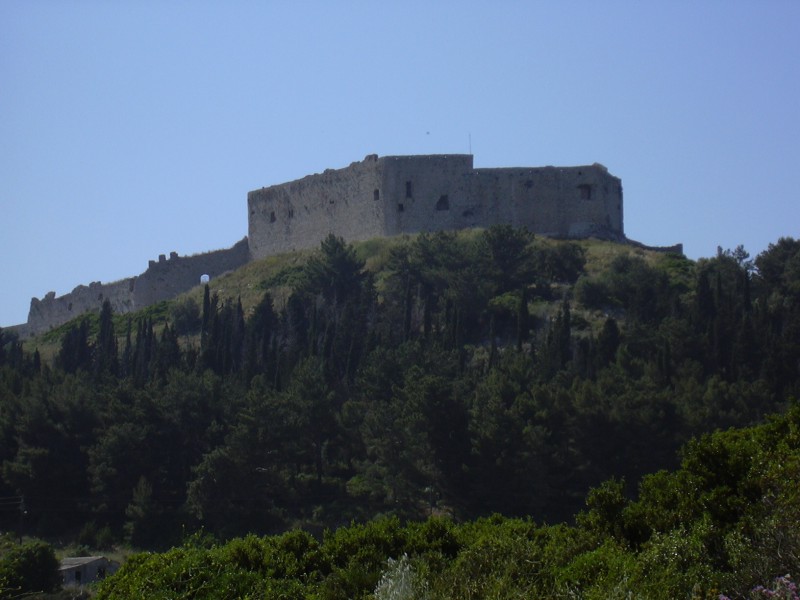
This is 180 degrees (or looking the other way) from the castle. That's actually quite a deep raveen, and then back up on the other side. Hey, what's those white blobs in the middle of the pic?
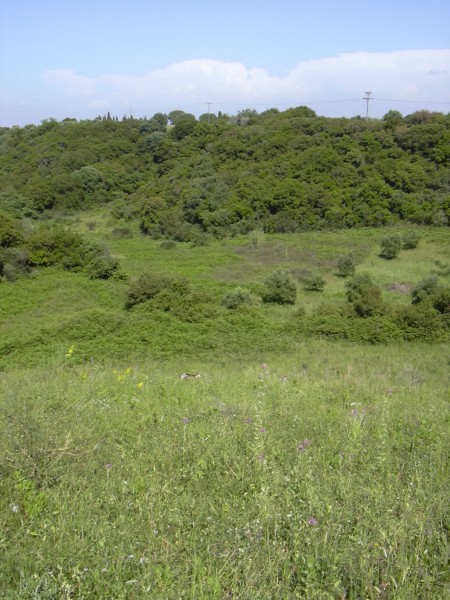
Goats! Wonderful bouncing, playing goats. Ok, maybe they're not bouncing or playing, but they were definately goats.
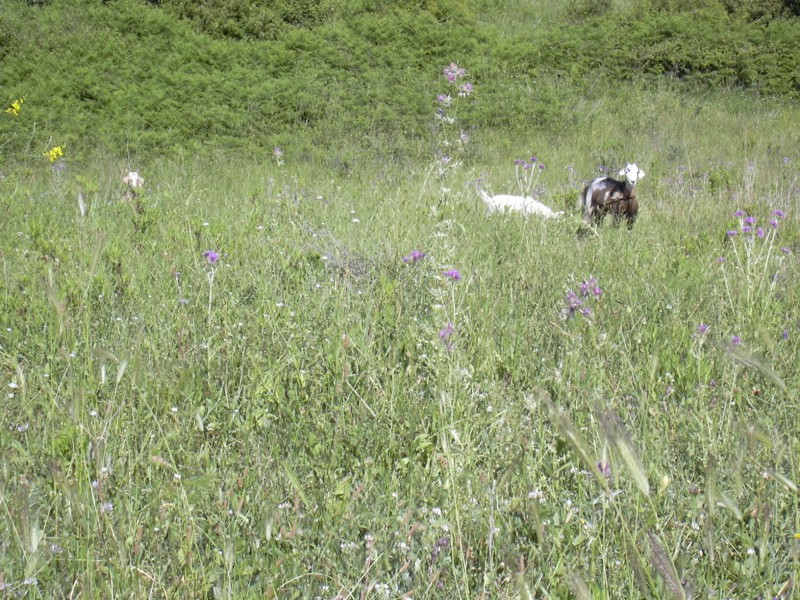
We drove around the castle, and here it is from the other side. Good bye from the mainland.
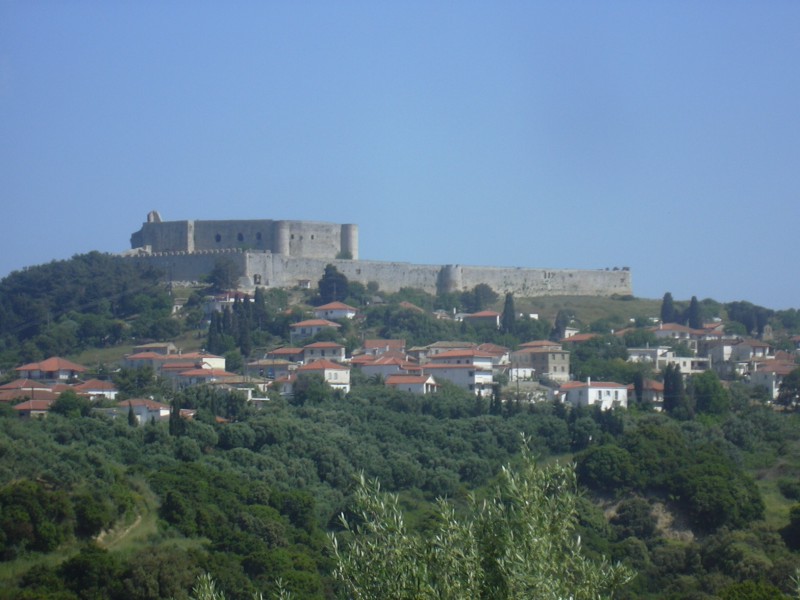
End of Part I